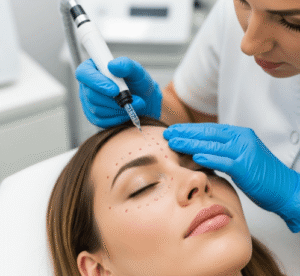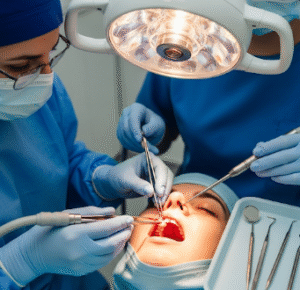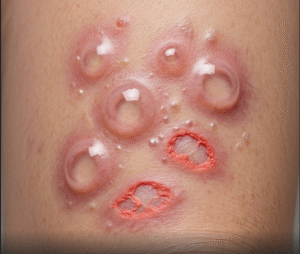Overview
Tietze Syndrome is a rare, benign condition characterized by inflammation of the costal cartilages, typically affecting the upper ribs where they attach to the sternum. It causes localized chest pain, swelling, and tenderness, often mimicking more serious conditions such as heart attack or costochondritis. The exact cause of Tietze Syndrome is unclear, but it may be linked to repetitive trauma, infection, or mechanical strain. South Korea offers advanced diagnostic tools, including high-resolution imaging and specialized musculoskeletal care, ensuring accurate diagnosis and effective management of this painful but non-life-threatening condition.
What is Tietze Syndrome?
Tietze Syndrome is an inflammatory disorder of the costal cartilage, most commonly involving the second or third ribs at the sternocostal junction. Unlike costochondritis, Tietze Syndrome is distinguished by visible swelling at the affected joint along with tenderness and pain. It is generally self-limiting but can persist for weeks to months. The condition is non-infectious and does not typically cause long-term damage, but its symptoms can interfere with daily activities, exercise, and quality of life.
It primarily affects young adults and is relatively uncommon. Accurate differentiation from cardiac or pulmonary conditions is critical to avoid unnecessary interventions.
Symptoms
The hallmark symptoms of Tietze Syndrome involve localized inflammation and pain:
- Chest pain: Sharp, aching, or pressure-like pain at the affected rib-sternum junction
- Swelling: Noticeable, tender lump over the costal cartilage
- Pain aggravated by movement: Especially with deep breathing, coughing, or upper body activity
- Redness or warmth: Mild inflammation at the site
- Radiating discomfort: Pain may extend to the shoulder, arm, or back
Symptoms are often intermittent and may worsen with physical activity or strain. Unlike heart-related pain, Tietze Syndrome is usually reproducible by pressing on the affected cartilage.
Causes
The exact cause of Tietze Syndrome remains unknown, but several factors may contribute:
- Repetitive trauma: Activities that strain the chest wall, such as heavy lifting or vigorous exercise
- Respiratory infections: Coughing or viral infections that stress the costal cartilage
- Mechanical strain: Postural issues or sudden torso movements
- Inflammatory response: Localized inflammation of cartilage and surrounding connective tissue
- Rare cases of autoimmune involvement: Leading to cartilage inflammation
While trauma or infection often precedes symptoms, many cases develop without a clear trigger.
Risk Factors
Certain factors may increase susceptibility to Tietze Syndrome:
- Age between 20 and 50 years, with young adults most commonly affected
- History of repetitive physical activity or manual labor
- Recent respiratory infections or persistent coughing
- Athletic or physically active lifestyle with frequent upper body strain
- Individual predisposition to musculoskeletal inflammation
Complications
Tietze Syndrome is generally self-limiting and non-life-threatening, but complications may occur if symptoms are severe or misdiagnosed:
- Chronic pain: Persistent discomfort affecting daily activities
- Reduced mobility: Difficulty with upper body movements or exercise
- Misdiagnosis: Confusion with heart attack, angina, or pulmonary conditions leading to unnecessary interventions
- Emotional distress: Anxiety due to chest pain or fear of serious illness
Prompt diagnosis and management minimize these risks and improve patient comfort.
Prevention
While Tietze Syndrome cannot always be prevented, certain measures may reduce the risk or severity:
- Avoid repetitive strain on the chest wall
- Maintain proper posture during exercise and daily activities
- Use protective techniques during lifting or physical labor
- Promptly treat respiratory infections to reduce coughing strain
- Engage in regular stretching and strengthening exercises for the upper body
- Seek early evaluation for unexplained chest pain to rule out serious conditions
Treatment Options in Korea
South Korea provides comprehensive management for Tietze Syndrome, focusing on symptom relief, inflammation control, and patient education.
Diagnosis:
- Physical examination to assess tenderness and swelling
- Imaging studies, such as X-rays, ultrasound, or MRI, to rule out fractures or other chest pathologies
- Laboratory tests in rare cases to exclude infection or systemic inflammation
- Detailed patient history to identify potential triggers or risk factors
Medical Treatments:
- Nonsteroidal anti-inflammatory drugs (NSAIDs): To reduce pain and inflammation
- Analgesics: For short-term pain relief during acute flare-ups
- Local corticosteroid injections: In severe or persistent cases to reduce inflammation
- Heat or cold therapy: To alleviate discomfort at the affected site
Rehabilitation and Support:
- Physical therapy focusing on gentle stretching and strengthening of chest and upper back muscles
- Lifestyle modifications to avoid repetitive strain or activities that exacerbate pain
- Education on self-care techniques and monitoring for symptom improvement
- Regular follow-up to ensure resolution and prevent recurrence
In Korea, multidisciplinary care involving orthopedic specialists, physiotherapists, and pain management teams ensures that patients with Tietze Syndrome receive safe, effective, and individualized treatment. With appropriate care, most patients experience significant relief within a few weeks to months, and long-term outcomes are excellent.













